A Tale
Once upon a time, there was a breed of creative professionals called curators. Their job description entailed involvement at the hanging of an exhibition. Having examined the collection they would suggest different arrangements for the work.
They would then stalk, with a suitably knowing sneer creasing their upper lips, around the space and direct small troops of eager attendants to move paintings a little to the left or a little to the right.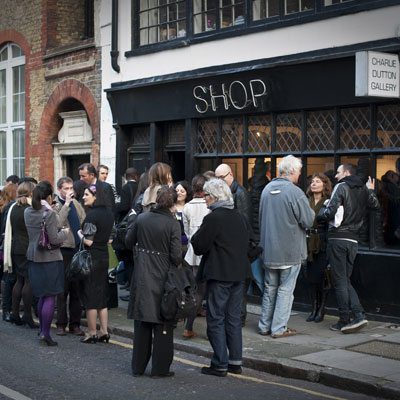
By the time the champagne corks were popping for the opening of the show, the paintings were most likely back in their original positions. Importantly however, they were now sanctified by the curator’s approval and, newly anointed with regimented glowing white price cards, they were ready to greet their audience.
A Memory
I am sitting fidgeting upon a hard wood stool listening to a professional practice talk given by a Royal Academy graduate.
The intent of the visit is to inspire cohesion and success in organising the end of year student group show.
The reason that I’m fidgeting is not however, as you might anticipate, from the chair and lack of air in the crowded lecture room, but rather from the fact that I’m keen to establish whether I’ve stumbled into the wrong class.
[quote]What bothered me,
however, was the
fact that this
disparity in egos
was a problem
in the first place[/quote]
‘I thought this was about how to make the work look good, you know, display it to its best potential?’ I whispered fervently to my neighbour.
My unfortunate co-conspirator glanced around in confusion, eyes glazing over. They had apparently been so transfixed by the prospect of writing on one of the giant sticky notes, now pasting the walls from floor to ceiling, that they didn’t actually have a clue what they were listening to either.
Throughout the remainder of the lecture I heard many ‘buzz’ words concerning ‘team work’, ‘consideration’, ‘mutual respect’ and ‘strategy’. You may begin to understand why I thought I’d stumbled into a key skills lecture.
I will happily acknowledge how the problem of the clashing visions of different curators on the show management team would affect the outcome of the exhibition. What bothered me, however, was the fact that this disparity in egos was a problem in the first place. It appeared to stem from a complication lodged within what we now define as an ‘exhibition’ and in the changing roles of the curator in relation to this.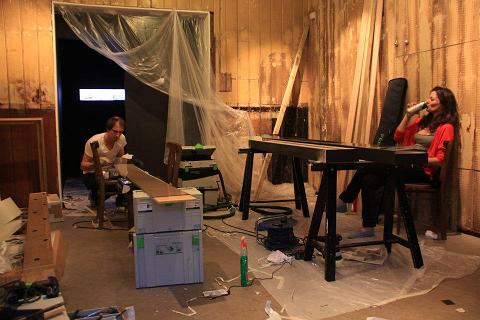
The very fact that we were discussing how to manage the personalities involved in these roles before any consideration of what work we were even dealing with, set my mind to wondering when this had happened and, more importantly, where had the art in the exhibition gone?
An Observation (I)
Curatorial activity now apparently covers many different models: from an arranger of artwork they are now ‘team leader’, ‘team player’, ‘point of contact’- no wonder the artworks are getting somewhat confused.
Is it this that has led to a conspicuous dearth in the autonomy of the work on the walls in preference for concept, ‘event’ based shows, vying to attract an audience by literalising the content of the show to some ‘clever’ curatorial concept.
[quote]the recruitment of
high profile
individuals may boost
museum attendance
but it is also in
danger of eclipsing
the actual pieces
being shown[/quote]
I am all for the making art accessible to all but there comes a point when the sundry of interactive events and features, incongruous pairings of old and new artists and humanisation of the artwork endanger the mystery that actually constitutes the aesthetic of the work.
Conversely, the pushing to make one exhibition more groundbreaking than the next or, the need to feature different thematic interpretations may so confuse the original message of the pieces that the show is no longer about the art but rather a bewildering maze of curatorial opinion.
An Observation (II)
This new vogue for inspirational jargon and directing art outside of white walls has clearly resulted in a more obvious colouring of the work on show by a curatorial force.
Alongside this has also risen the literal cult of the curator as celebrity. Much like the drive to thematically push boundaries to attract crowds, this rise in the recruitment of high profile individuals may boost museum attendance but it is also in danger of eclipsing the actual pieces being shown in preference for a gimmicky universal draw.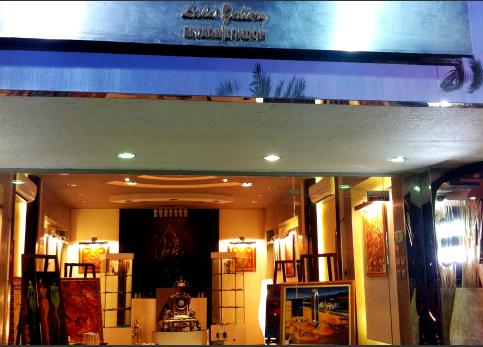
Even back in 2009 Bow Arts were listing Graham Norton, David Dimbleby and Loyd Grossman amidst those courted to curate their annual open exhibition. Certainly a novel and eclectic selection but one that has little bearing on professional art practice- the success or failure of the courtship now precedes the art.
It is true that in financially stringent times for arts funding the onus placed upon galleries to hit visitor targets has become ever more prevalent a consideration.
However, there is a point where the push to ‘take art into different contexts’ pays more testimony to this party of the curator’s ego, whisking us on a whirlwind of either name dropping or mazes of interpretation.
An Anecdote
I was speaking with two fellow artists about this mounting obsession with taking work into new contexts and settings, in relation to the rise of the ‘pop up’ phenomenon and the exhibiting of work within events. Each had had their work chosen for display in an interactive cinema experience and, a theatrical party respectively.
The pitch to the artists involved had been that their work would be exposed to larger audiences than a normal exhibition could muster and, that the novel setting would lend a new interpretative slant to the pieces.
In reality, both had work damaged, nothing sold and, it rapidly became evident that the art was there for decorative purposes rather than contemplation.
As different as these examples may be to a museum show that is advertised as an ‘exhibition’, the experiential element and party atmosphere of marvelling at the ambience of art as an event is a little too reminiscent of the flashes and bangs of recent leading gallery openings. ‘Bowie’, ‘Monet’, ‘Life and Death’ emblazon billboards- in a celebrity market there is apparently now no room for quiet art.
too reminiscent of the flashes and bangs of recent leading gallery openings. ‘Bowie’, ‘Monet’, ‘Life and Death’ emblazon billboards- in a celebrity market there is apparently now no room for quiet art.
Even the growing popularity of Fitzrovia Lates and First Thursdays play testimony to the fact that buyer focussed commercial galleries are having to focus more and more on the ‘buzz’ and ‘curb appeal’ of shows- sometimes to the detriment of quality.
And…. A Party
A high profile example of this that recently grabbed my attention was a description of how Fountain Art Fair descends into an all night alcohol soaked rave in a warehouse.
‘Sounds like fun’ was my first thought and then I paused in confusion – hang on, this was an art fair, not a party. An extreme example, the point is that this chaos has been differentiated from the perhaps more intentionally riotous events described above – but with a status as being about art.
Indeed, just as the artwork was blindly considered at Fountain through beer goggles, I would argue that we are becoming increasingly dazzled by the surface value of ‘attractive’ shows, organised by suitably groundbreaking individuals.
Obviously the very presence of so much easily accessible culture in our society can only be a good thing but, I do think that artists and art itself need defending before we lose sight of what ‘culture’ actually is.
The above illustrations were all chosen from Trebuchet’s Hanging Offence series of curator interviews. Mercifully (and genuinely) the interviewees in each of the Hanging Offence articles make it very clear in their discourse that they value art far and above marketing. But they’re no slouches at the business side either. Bless ’em all.



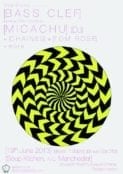


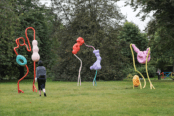













Hi Francesca, interesting comment on what curating means…I was probably among the students attending the RA graduate lecture if it is the same one. Anyway ,there’s an interesting exhibition at the Enclave Gallery which is an attempt to understand what curation is through works made and chosen bu the curators . Have a look : http://www.alisn.org/The-Opinion-Makers